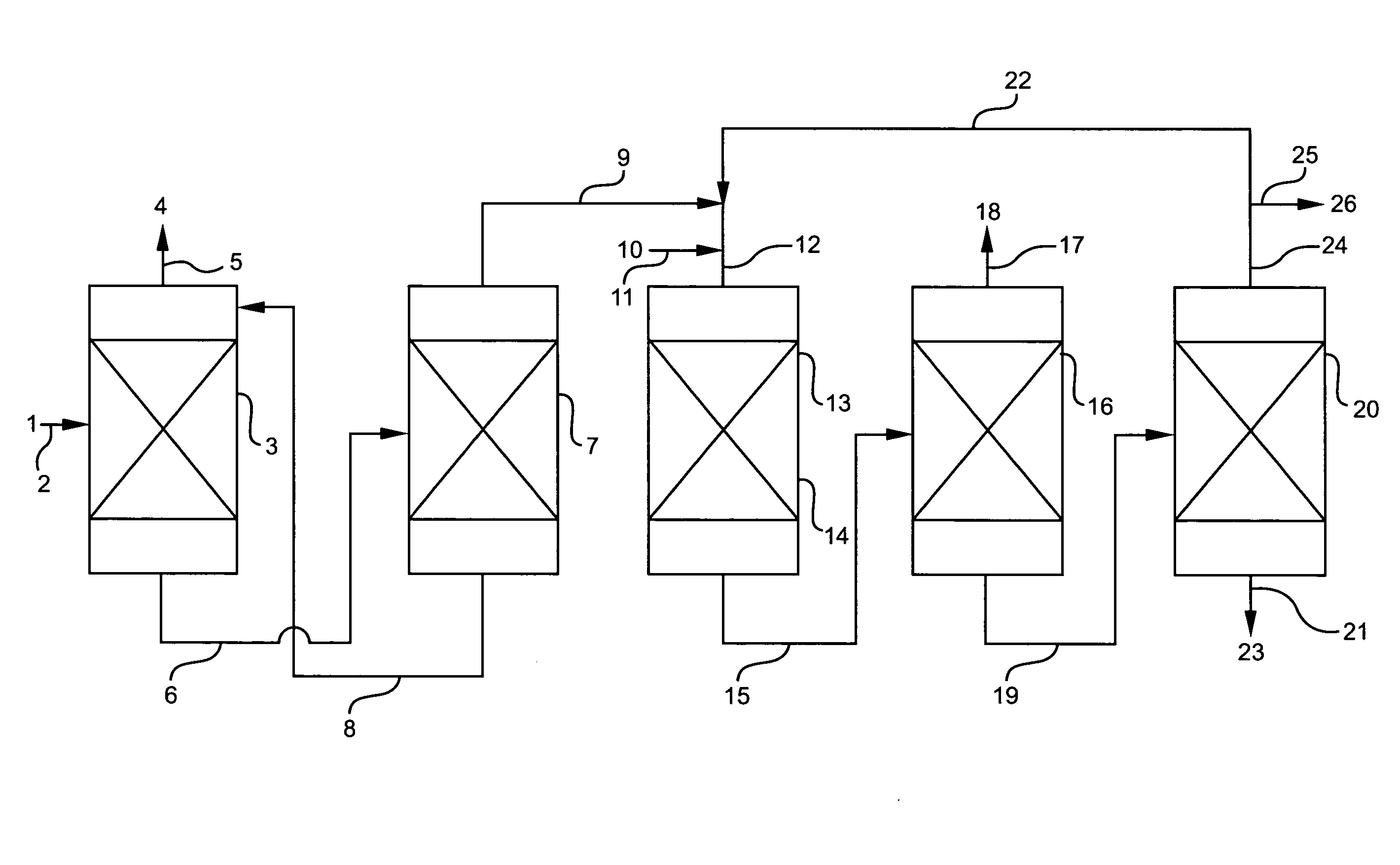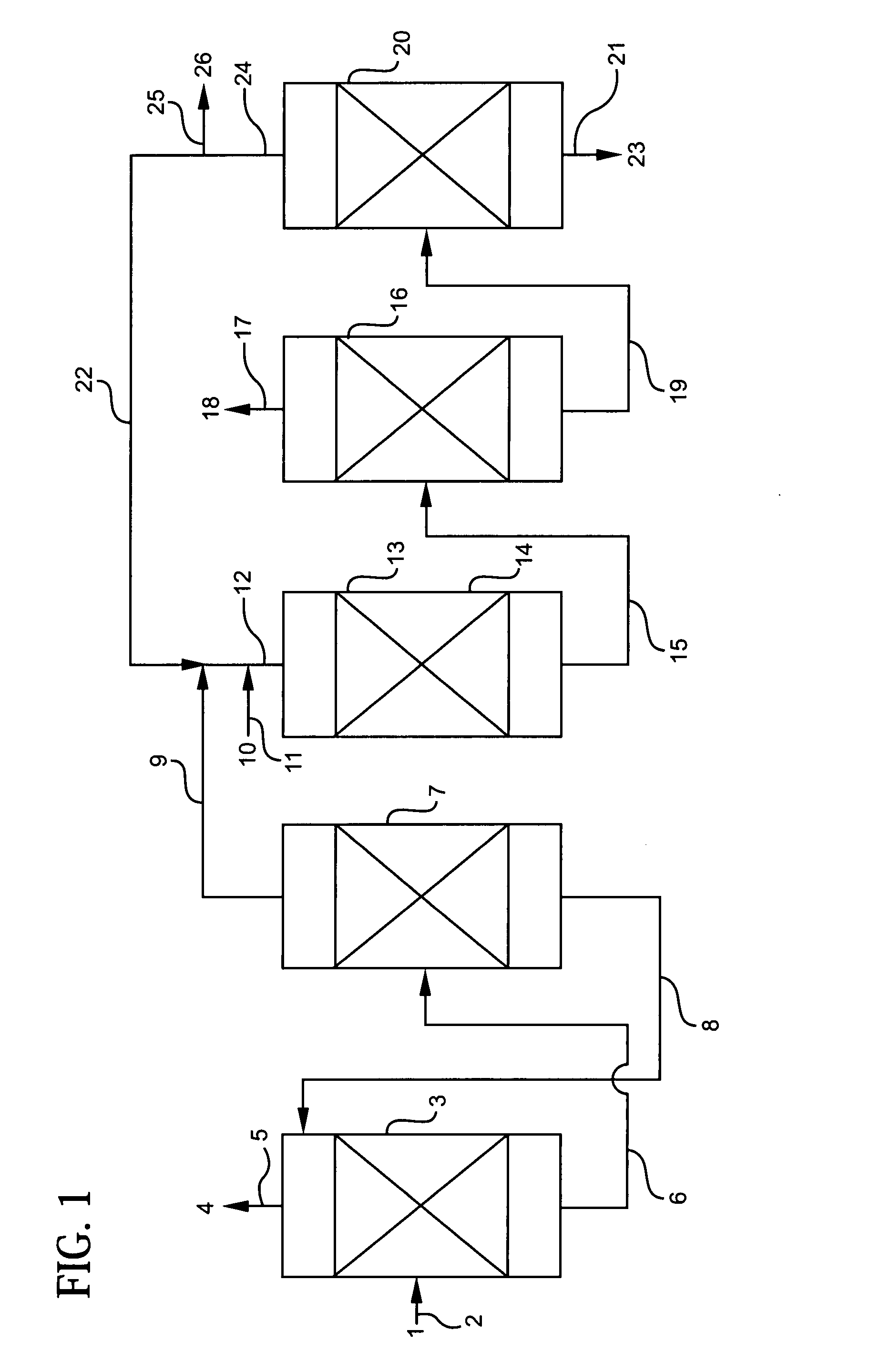Propylene production
a technology of propylene and propylene, which is applied in the direction of hydrocarbon by metathesis reaction, hydrocarbon preparation catalyst, bulk chemical production, etc., can solve the problems of limiting the catalyst productivity and and achieve the effect of increasing the throughput of the plan
- Summary
- Abstract
- Description
- Claims
- Application Information
AI Technical Summary
Benefits of technology
Problems solved by technology
Method used
Image
Examples
example
[0034]In the scheme in FIG. 1, acetonitrile (ACN) is used as an extractive solvent. The solvent enables C4 paraffins to be separated as lights from C4 olefins.
[0035]Unit 3 is an extractive distillation absorber. It contains 100 ideal stages. The overhead pressure is 65 psig and the bottoms pressure is 75 psig. The reflux ratio is 6:1 by weight. The overhead temperature is 113° F. and the bottoms temperature is 198° F. The feed stream 1 enters unit 3 at stage 50 at 134° F. The expected flows of streams and their compositions are shown in Table 1. C4 paraffins stream 4 is removed as overhead (distillate) from this tower. A small amount of ACN is lost in the overhead stream 4, which is removed via a water wash step (not shown).
[0036]Unit 7 is an extractive distillation stripper. This tower contains 30 ideal stages. The bottoms stream from unit 3 enters unit 7 through line 6 at stage 15 of tower 7. The overhead pressure is 65 psig and the bottoms pressure is 70 psig. The reflux ratio is...
PUM
| Property | Measurement | Unit |
|---|---|---|
| wt. % | aaaaa | aaaaa |
| wt. % | aaaaa | aaaaa |
| temperature | aaaaa | aaaaa |
Abstract
Description
Claims
Application Information
 Login to View More
Login to View More - R&D
- Intellectual Property
- Life Sciences
- Materials
- Tech Scout
- Unparalleled Data Quality
- Higher Quality Content
- 60% Fewer Hallucinations
Browse by: Latest US Patents, China's latest patents, Technical Efficacy Thesaurus, Application Domain, Technology Topic, Popular Technical Reports.
© 2025 PatSnap. All rights reserved.Legal|Privacy policy|Modern Slavery Act Transparency Statement|Sitemap|About US| Contact US: help@patsnap.com


